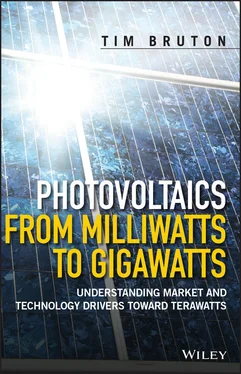Registered Offices John Wiley & Sons, Inc., 111 River Street, Hoboken, NJ 07030, USA John Wiley & Sons Ltd, The Atrium, Southern Gate, Chichester, West Sussex, PO19 8SQ, UK
Editorial Office The Atrium, Southern Gate, Chichester, West Sussex, PO19 8SQ, UK
For details of our global editorial offices, customer services, and more information about Wiley products visit us at www.wiley.com.
Wiley also publishes its books in a variety of electronic formats and by print‐on‐demand. Some content that appears in standard print versions of this book may not be available in other formats.
Limit of Liability/Disclaimer of Warranty While the publisher and authors have used their best efforts in preparing this work, they make no representations or warranties with respect to the accuracy or completeness of the contents of this work and specifically disclaim all warranties, including without limitation any implied warranties of merchantability or fitness for a particular purpose. No warranty may be created or extended by sales representatives, written sales materials or promotional statements for this work. The fact that an organization, website, or product is referred to in this work as a citation and/or potential source of further information does not mean that the publisher and authors endorse the information or services the organization, website, or product may provide or recommendations it may make. This work is sold with the understanding that the publisher is not engaged in rendering professional services. The advice and strategies contained herein may not be suitable for your situation. You should consult with a specialist where appropriate. Further, readers should be aware that websites listed in this work may have changed or disappeared between when this work was written and when it is read. Neither the publisher nor authors shall be liable for any loss of profit or any other commercial damages, including but not limited to special, incidental, consequential, or other damages.
Library of Congress Cataloging‐in‐Publication Data
Names: Bruton, Tim, 1946– author.
Title: Photovoltaics from milliwatts to gigawatts : understanding market and technology drivers toward terawatts / Tim Bruton.
Description: Hoboken, NJ : Wiley, 2021. | Includes bibliographical references and index.
Identifiers: LCCN 2020030557 (print) | LCCN 2020030558 (ebook) | ISBN 9781119130048 (cloth) | ISBN 9781119130055 (adobe pdf) | ISBN 9781119130062 (epub)
Subjects: LCSH: Silicon solar cells. | Photovoltaic power generation–History. | Photovoltaic power systems. | Solar energy industries.
Classification: LCC TK2963.S55 B78 2021 (print) | LCC TK2963.S55 (ebook) | DDC 621.31/244–dc23
LC record available at https://lccn.loc.gov/2020030557LC ebook record available at https://lccn.loc.gov/2020030558
Cover design: Wiley
Cover image: © alexsl / Getty Images
For my grandchildren: Bethan, Benjamin, Carys, Daniel, Isaac, Jemima, Joseph, Joshua, Samuel
Harnessing the power of the sun has been a challenge to the human race for thousands of years. In the last quarter of the twentieth century and into the twenty‐first, the deployment of photovoltaic solar energy conversion assumed great importance. In its early years, it promised security of energy supply and price stability for many countries, and today it is a reliable route to carbon‐free energy production, a vital tool in the fight to halt manmade climate change. I have been highly privileged in being able to see this dramatic story evolve. I joined the embryonic BP Solar research team in August 1983 when the world market was a mere 20 megawatts and the future uncertain. In the subsequent 37 years, I have seen the technology grow from those early days when many applications were at the milliwatt scale to now, when single photovoltaic power stations of over 1 GWp are in operation. That this has happened is due to the interactions of many actors from the fields of science, manufacturing, and politics.
My ambition in this book is to relate how solar cells transitioned from a high‐cost, small‐volume, niche market to the global status they enjoy today. The text follows the developments in fundamental understanding, cell processing, and scale‐up of manufacturing (and subsequent drop‐off in product cost). I tend to use the conversion efficiency of solar cells from solar radiation to useful electricity as a criterion for assessing the progress of particular technologies, but with the caveat that high efficiency must be achieved cost‐effectively. Throughout the period in question, I was principally involved at BP Solar and then at NaREC in silicon solar cell design and manufacturing, although along the way I also had responsibilities for thin‐film silicon, cadmium telluride, III‐V cells, and concentrators. I have taken the opportunity to detail progress in these areas, but also to give my own explanation for why they have not been able to displace silicon as the prime solar cell material. The opinions expressed in this book are entirely my own and are not the views of any of my previous employers.
Throughout my career, I had the privilege of working with many able and dedicated people. In particular, I am indebted to Nigel Mason, Stephen Roberts, Daniel Cunningham, Keith Heasman, and Stephen Ransome for their steadfast support and friendship through the years. Following the merger of BP Solar with Solarex in 2000, I was able to connect with a different generation of pioneers, and it was inspiring to be able to share ideas with Steve Shea, John Wohlgemuth, and the late David Carlson. I have also enjoyed interactions with many others through supporting manufacturing in the United Kingdom, Spain, India, Australia, and the United States. There are many other colleagues from my time in BP Solar and NaREC who helped in innumerable ways, and space does not allow me to acknowledge them all by name. I must thank my wife, Margaret, who selflessly supported me throughout my career and without whom this book would not have been written.
1 The Photovoltaics: The Birth of a Technology and Its First Application
1.1 Introduction
‘For more than a generation, solar power was an environmentalist fantasy, an expensive and impractical artefact from the Jimmy Carter era. That was true right up to the moment it wasn’t’ [1]. This quotation neatly encapsulates the theme of this book: how a technology grew from a high‐cost product in a specialist application to a global technology supplying a significant proportion of the world’s electricity against a background of at best scepticism and at worst open hostility. In 2018, 102 GWp of photovoltaic modules were installed globally, leading to a total installed capacity of 509 GWp, while an independent study showed that photovoltaics was the lowest‐cost means of generation of new‐build electricity‐generating capacity, including nuclear and fossil fuel sources [2]. At the end of 2019, photovoltaics provided 3% of the global electricity supply, but the expectation is that this percentage will continue to rise until it is the dominant electricity‐generating technology by 2050, with 60% of global output [3,4]. Figure 1.1shows the expected growth of all generating technologies to 2050.
This dramatic development of photovoltaic installations has been the work of many inspired individuals. Their stories are told in other places [5–7]. The aim of this book is to describe how the technology changed from small‐area solar cells of 10% efficiency conversion of sunlight to electricity to the mass‐production cells of today, with efficiencies in the range 20–24%, and the route to >30% becoming clear. The present chapter describes how the potential for photovoltaic conversion was first recognised and how it moved into the early stages of commercialisation as a high‐technology product for use in powering space satellites. Later chapters will describe how this space technology became a terrestrial one and the driving forces and technology developments that made it the global force it is today. Furthermore, the options for going beyond the current technology will be reviewed and the route to achieving terawatt global installations discussed.
Читать дальше












